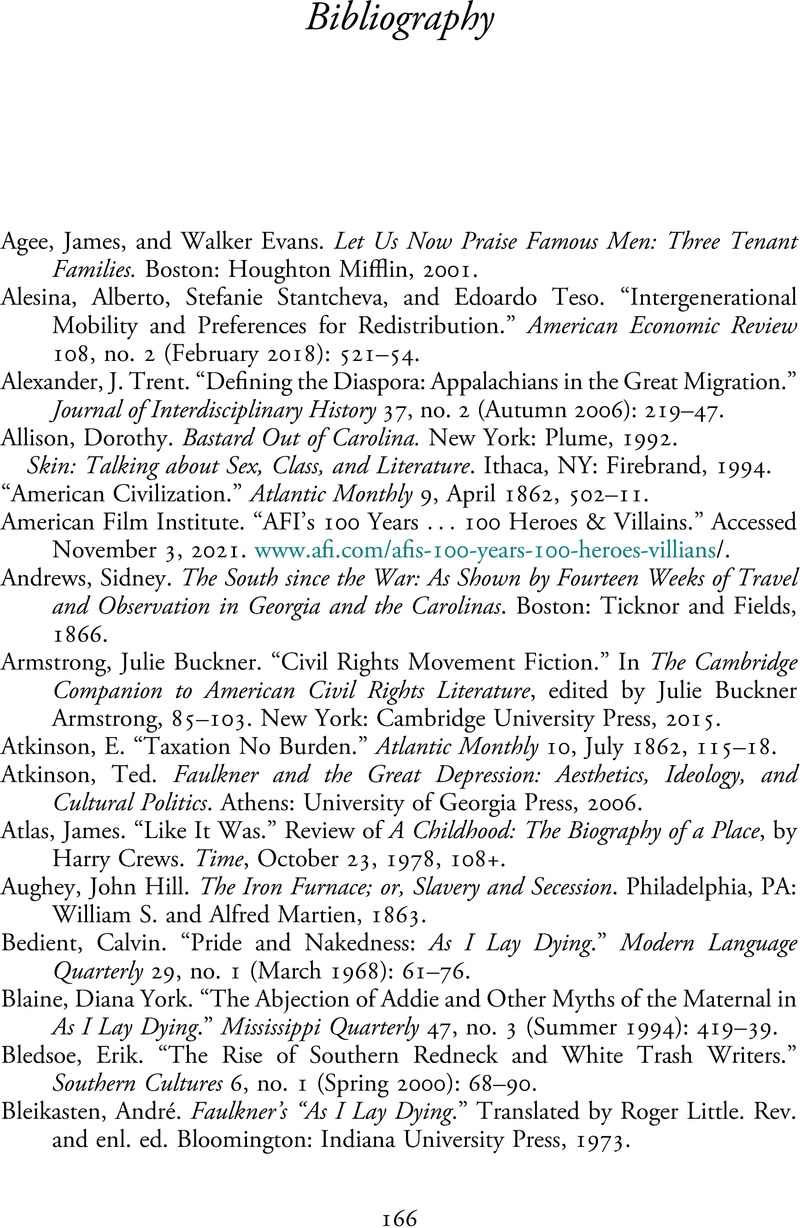Book contents
- Class, Whiteness, and Southern Literature
- Cambridge Studies in American Literature and Culture
- Class, Whiteness, and Southern Literature
- Copyright page
- Contents
- Figures
- Acknowledgments
- Introduction
- Chapter 1 Riffraff and Half-Strainers
- Chapter 2 Slow, Sweating, Stinking Bumpkins
- Chapter 3 Civil Rights and Uncivil Whites
- Chapter 4 Hungry Women and Horny Men
- Coda
- Notes
- Bibliography
- Index
- Recent books in this series (continued from page ii)
- References
Bibliography
Published online by Cambridge University Press: 01 December 2022
- Class, Whiteness, and Southern Literature
- Cambridge Studies in American Literature and Culture
- Class, Whiteness, and Southern Literature
- Copyright page
- Contents
- Figures
- Acknowledgments
- Introduction
- Chapter 1 Riffraff and Half-Strainers
- Chapter 2 Slow, Sweating, Stinking Bumpkins
- Chapter 3 Civil Rights and Uncivil Whites
- Chapter 4 Hungry Women and Horny Men
- Coda
- Notes
- Bibliography
- Index
- Recent books in this series (continued from page ii)
- References
Summary

Information
- Type
- Chapter
- Information
- Class, Whiteness, and Southern Literature , pp. 166 - 183Publisher: Cambridge University PressPrint publication year: 2022
